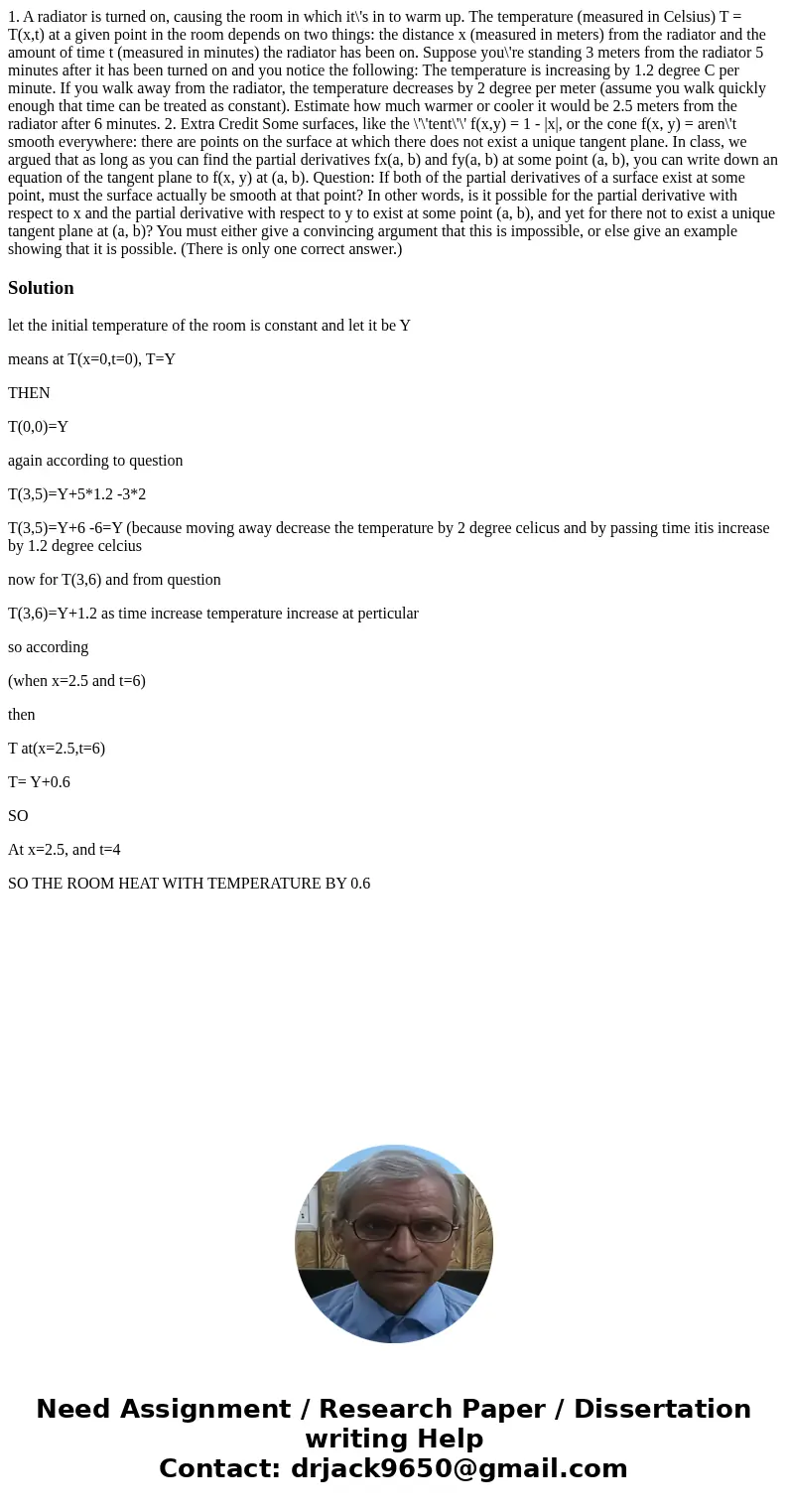1 A radiator is turned on causing the room in which its in t
1. A radiator is turned on, causing the room in which it\'s in to warm up. The temperature (measured in Celsius) T = T(x,t) at a given point in the room depends on two things: the distance x (measured in meters) from the radiator and the amount of time t (measured in minutes) the radiator has been on. Suppose you\'re standing 3 meters from the radiator 5 minutes after it has been turned on and you notice the following: The temperature is increasing by 1.2 degree C per minute. If you walk away from the radiator, the temperature decreases by 2 degree per meter (assume you walk quickly enough that time can be treated as constant). Estimate how much warmer or cooler it would be 2.5 meters from the radiator after 6 minutes. 2. Extra Credit Some surfaces, like the \'\'tent\'\' f(x,y) = 1 - |x|, or the cone f(x, y) = aren\'t smooth everywhere: there are points on the surface at which there does not exist a unique tangent plane. In class, we argued that as long as you can find the partial derivatives fx(a, b) and fy(a, b) at some point (a, b), you can write down an equation of the tangent plane to f(x, y) at (a, b). Question: If both of the partial derivatives of a surface exist at some point, must the surface actually be smooth at that point? In other words, is it possible for the partial derivative with respect to x and the partial derivative with respect to y to exist at some point (a, b), and yet for there not to exist a unique tangent plane at (a, b)? You must either give a convincing argument that this is impossible, or else give an example showing that it is possible. (There is only one correct answer.) 
Solution
let the initial temperature of the room is constant and let it be Y
means at T(x=0,t=0), T=Y
THEN
T(0,0)=Y
again according to question
T(3,5)=Y+5*1.2 -3*2
T(3,5)=Y+6 -6=Y (because moving away decrease the temperature by 2 degree celicus and by passing time itis increase by 1.2 degree celcius
now for T(3,6) and from question
T(3,6)=Y+1.2 as time increase temperature increase at perticular
so according
(when x=2.5 and t=6)
then
T at(x=2.5,t=6)
T= Y+0.6
SO
At x=2.5, and t=4
SO THE ROOM HEAT WITH TEMPERATURE BY 0.6

 Homework Sourse
Homework Sourse